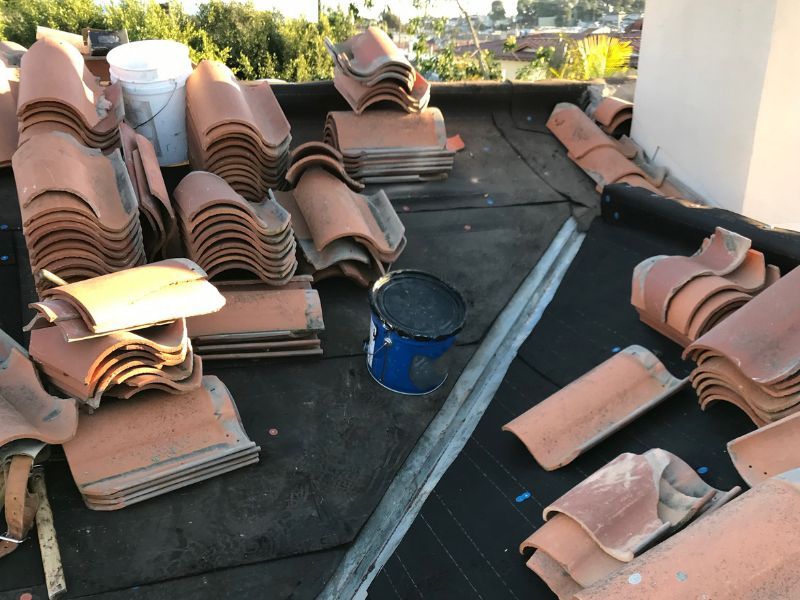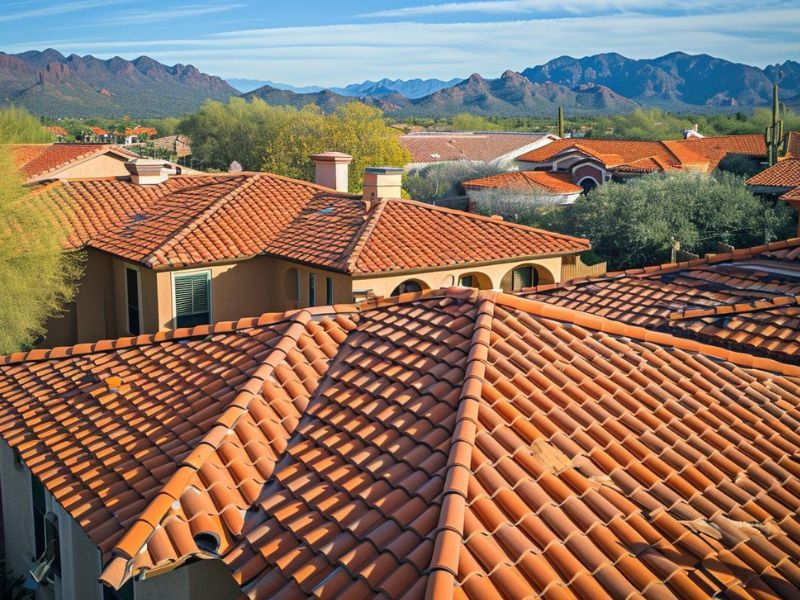Built-Up Roofing 101: Everything You Need to Know Before Installation
TL;DR: Built-up roofing (BUR) systems, with over a century of proven reliability, are a durable choice for commercial and industrial buildings with flat or low-sloped roofs. These systems, consisting of multiple layers of bitumen and reinforcing felt, offer excellent protection against the elements and can last up to 40 years. Professional installation and regular maintenance are crucial for optimal performance and longevity. Despite being cost-effective and durable, BUR systems are heavier and may emit toxic fumes during installation. Partnering with experienced roofing professionals ensures successful installation and long-term satisfaction. Contact us today to explore how BUR systems can enhance your project.
Built-up roofing (BUR) systems are a staple in sheltering commercial and industrial buildings, especially those featuring flat or low-sloping roofs. With a proven track record of over 100 years in the U.S., these roofing systems offer unparalleled durability and protection. Their design incorporates multiple ply sheets and asphalt layers, providing redundancy and excellent defense against the elements.
This article will guide you through the essentials of built-up roofing systems. You’ll learn more about the installation process involving skilled workers and get maintenance advice that ensures customer satisfaction. Whether you’re curious about roof design, roof flashing, or the long-term advantages and considerations of built-up roofs, you’ll find comprehensive insights here.
Understanding Built-Up Roofing
Built-up roofing systems, a basis in the roofing industry, especially for flat or low-sloped roofs, have evolved to meet the diverse needs of modern buildings. At their core, BUR systems are composed of multiple layers that work in unison to offer unmatched protection.
Core Components
The system starts with a base layer, often over insulation or a cover board, followed by multiple layers of bitumen (asphalt or tar) and reinforcing felt. This robust combination is then topped with a cap sheet or a flood coat of asphalt and granules, providing a seamless, waterproof barrier.
Variability and Adaptability
The versatility of BUR systems is evident in their construction, which can vary in the number of layers and materials used, affecting performance and longevity. Typically, these systems include three to four layers but can be adjusted based on specific building needs and climate conditions.
Protection and Performance
Beyond waterproofing, BUR systems offer significant advantages, including ultraviolet (UV) protection, fire resistance, and energy efficiency. Their durability is notable, with some systems lasting up to 40 years. However, they carry challenges, such as their weight and potential vulnerability to moisture if not properly installed.
Understanding these fundamental aspects of built-up roofing systems before installation ensures you’re well-equipped to make informed decisions for your roofing project, prioritizing durability, efficiency, and protection.
Materials Used in Built-Up Roofing Systems
Key materials make BUR systems robust and reliable. These materials work harmoniously to provide a durable, waterproof barrier that protects buildings from weather conditions.
- Bitumen: Acts as the primary waterproofing component. It’s available as asphalt (a petroleum product), coal tar, or cold-applied adhesives.
- Ply Sheets: Reinforcing layers that provide structure and strength. These can be made of fabric or fiberglass, saturated in asphalt, or cold-applied adhesive.
- Insulation: Typically polyisocyanurate insulation or cover board, it provides thermal insulation and energy efficiency.
- Flashing: Strips of metal or other materials used to seal the edges and seams of the roof.
- Surfacing: A top layer that may include gravel, mineral cap sheets, or alternative coatings like aluminum and elastomeric coatings for added protection and aesthetics.
- Substrate or Decking: The base layer over which the BUR system is installed.
- Venting Base Sheet: Ensures proper ventilation.
- Top Layer: A cap sheet or flood coat of asphalt and granules, or slag/gravel in asphalt for durability.
High-performance ply sheets and reflective surfacing options enhance the BUR system’s performance, offering better durability and energy efficiency. When layered correctly by skilled workers, these materials create a Built-Up Roofing System that ensures long-lasting protection and customer satisfaction.
Installation Process of Built-Up Roofing
The installation of the BUR system is complex and requires skilled workers. Here’s a breakdown of the main steps involved.
Preparation and Base Sheet Attachment
The process often begins with removing old roofing material, although BUR can sometimes be applied directly over it, reducing costs. The first layer, or base sheet, is then attached to the roof deck, providing a foundation for subsequent layers.
Application of Felt and Bitumen
Multiple layers of roofing felt are laid down, each interwoven with bitumen. This bitumen is heated and melted, a step that requires precision and safety precautions due to the high temperatures involved. The layers are meticulously applied to ensure a waterproof barrier, highlighting the necessity of experienced roofing contractors.
Installation of Gravel or Cap Sheets and Final Asphalt Layer
Depending on the chosen finish, gravel or cap sheets are installed as the top layer for extra protection and durability. A final asphalt layer is applied, sealing the roofing system and ensuring its integrity against the elements.
Given the technical nature and the heavy materials involved, BUR installation is not recommended for DIY enthusiasts. Planning the installation during a cool, dry season can provide a more comfortable environment for the roofing crew, emphasizing the importance of timing in these projects.
Always entrust this task to a professional roofing company experienced in built-up roofing systems to ensure quality and customer satisfaction.
Maintenance and Repairs
Maintaining your BUR system ensures its longevity and performance. While BUR is recognized for its durability, regular maintenance, and timely repairs are essential. Conduct inspections annually to catch any issues early. Recoat every 10-15 years to maintain waterproofing and UV protection.
Check for and clear any blockages regularly. You should also try monitoring for point loading and secure condensation pipes to avoid leaks.
If necessary, repair with patches or consider replacement for severe cases. These often indicate water damage and immediate repair is necessary to prevent further issues. Invest your time into cleaning accumulated dirt and debris to avoid moisture buildup.
Reapply the ultraviolet protection layer every five years, sealing any leaks or cracks beforehand.
Advantages and Disadvantages of Built-Up Roofing
Understanding the advantages and disadvantages of BUR systems is essential before making a decision.
Advantages
BUR is two to three times less expensive than asphalt shingles, ranking it the most budget-friendly option for flat roofs. With a typical 20-year warranty and some systems lasting up to 40 years, BUR offers a durable solution resistant to wind (at least 110 mph) and fire.
It offers excellent waterproofing, UV protection, and wind and temperature variations resistance. It’s known to require minimal upkeep, thanks to its robust water resistance and efficient use of space.
Disadvantages
BUR systems are heavier than other options, potentially posing issues for buildings with weight restrictions. Hot asphalt can release toxic fumes, raising environmental and health concerns during installation.
Despite its durability, BUR can be prone to water damage, especially in areas with freeze-thaw cycles or high rainfall, which can lead to leaks or blisters in the top layer.
Wrapping Up
It’s clear that several key factors, including materials, installation processes, and maintenance, must be considered in the selection and implementation of built-up roofing systems.
Now that you know everything you need to know before installation, it becomes evident that professional consultation and expertise are needed to navigate the complexities of installation and maintenance.
For those contemplating the adoption of a BUR system, partnering with an experienced roofing company can significantly improve the outcome.
To explore how Built-Up Roofing can enhance your project and seek expert advice, consider reaching out to Elite Roofing and Construction. We are a fully certified company with more than 15 years of experience. Contact us today and improve your home!




